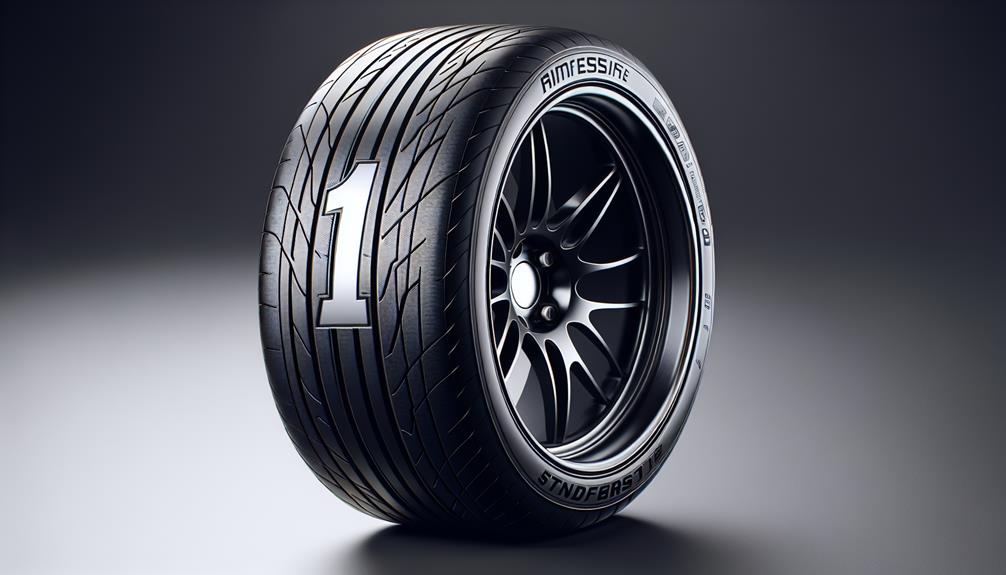How Many Miles Should Tires Last

Have you ever wondered how many miles your tires should last?
Imagine this: you've just invested in a new set of tires for your car, expecting them to serve you faithfully for thousands of miles. But after only a few months, you start noticing signs of wear and tear.
The question lingers in your mind: are your tires supposed to last longer?
In this discussion, we will explore the factors that affect tire lifespan, the recommended mileage for different tire types, and crucial signs that indicate it may be time to replace your tires.
Buckle up and prepare to discover the secrets to extending the life of your tires.
Key Takeaways
- Environmental conditions and tire pressure greatly affect tire lifespan.
- Different tire types have recommended mileage ranges.
- Signs that indicate the need for tire replacement include uneven tread wear, cracks or bulges, and low tread depth.
- Regular tire maintenance and proper tire rotation can extend tire life.
Factors Affecting Tire Lifespan
There are several key factors that can significantly impact the lifespan of your tires.
One of the most important factors is the environmental conditions in which your tires are used. Extreme temperatures, both hot and cold, can have a detrimental effect on tire durability. High temperatures can cause the rubber to degrade more quickly, leading to premature wear and reduced lifespan. On the other hand, cold temperatures can make the rubber more brittle and prone to cracking, again shortening the lifespan of the tire.
Another critical factor that affects tire lifespan is tire pressure. Maintaining the proper tire pressure is essential for ensuring optimal performance and longevity. Underinflated tires can cause increased friction between the tire and the road, resulting in excessive heat buildup and accelerated wear. Overinflated tires, on the other hand, can lead to uneven tread wear and reduced traction, compromising both safety and lifespan.
To maximize the lifespan of your tires, it's crucial to regularly check and maintain the proper tire pressure. Additionally, you should be mindful of the environmental conditions in which you operate your vehicle. By taking these factors into consideration, you can ensure that your tires last as long as possible, saving you money and promoting safety on the road.
Recommended Mileage for Different Tire Types
The recommended mileage for different tire types can vary based on factors such as tire construction, tread design, and driving conditions. Tire durability and performance are crucial considerations when determining the recommended mileage for a specific tire type.
All-season tires, which are designed to provide a balance between performance and longevity, typically have a recommended mileage range of 50,000 to 70,000 miles. These tires are versatile and capable of handling various driving conditions, making them a popular choice among drivers.
Performance tires, on the other hand, prioritize maximum grip and handling capabilities. Due to their softer rubber compound and specialized tread patterns, performance tires tend to have a shorter lifespan. In general, these tires can last anywhere between 20,000 to 40,000 miles. However, aggressive driving habits or track use can significantly reduce their longevity.
Meanwhile, winter tires are specifically designed to excel in cold weather conditions, providing superior traction on snow and ice. These tires typically have a recommended mileage range of 25,000 to 35,000 miles. It's important to note that using winter tires beyond their recommended mileage can compromise their performance and safety on icy roads.
In addition to tire construction and type, driving conditions can also impact tire lifespan. Factors such as temperature, road surface, and driving habits can all affect how quickly a tire wears out. For example, driving on rough roads or frequently hitting potholes can accelerate tire wear. Similarly, high-speed driving or sudden braking can cause increased tire wear and reduce their lifespan.
Understanding the recommended mileage for different tire types and the impact of driving conditions can help you make informed decisions about tire maintenance and replacement. Regularly inspecting your tires, maintaining proper tire pressure, and scheduling regular rotations and alignments can all contribute to prolonging tire lifespan and ensuring optimal performance.
Signs That Your Tires Need Replacing
If you notice any of the following signs, it may be time to consider replacing your tires:
- Uneven tread wear: Take a look at your tires and check if the tread is wearing down evenly across the entire surface. If you notice that one side is more worn than the other, it could indicate alignment issues or improper tire inflation. This can affect your vehicle's handling and safety.
- Cracks or bulges: Inspect your tires for any visible cracks or bulges on the sidewall or tread. These can be caused by age, overloading, or impact damage. Cracks weaken the tire's structure, while bulges indicate internal damage. Both are warning signs that your tires need to be replaced immediately.
- Low tread depth: Use a tread depth gauge or the penny test to measure the depth of your tire tread. If the tread is worn down to 2/32 of an inch or less, it's time to replace your tires. Low tread depth reduces traction, especially in wet or snowy conditions, increasing the risk of accidents.
Regular tire maintenance is essential for ensuring your safety on the road. By paying attention to these warning signs and taking proper care of your tires, you can extend their lifespan and drive with confidence.
Tips to Extend the Life of Your Tires
To maximize the lifespan of your tires, implement these expert tips for extending their longevity. Following a proper tire maintenance checklist and choosing the right tire pressure are crucial steps in ensuring that your tires last as long as possible. Here are some key tips to help you achieve this:
- Regularly check your tire pressure: Maintaining the correct tire pressure is essential for optimal tire performance and longevity. Underinflated tires can cause excessive wear on the edges, while overinflated tires can lead to the center wearing out faster. Refer to your vehicle's manual or the tire manufacturer's recommendations for the appropriate tire pressure.
- Rotate your tires regularly: Rotating your tires helps distribute the wear more evenly, prolonging their lifespan. Consult your vehicle's manual to determine the recommended rotation pattern and frequency.
- Keep your tires properly aligned: Improper alignment can cause uneven tire wear, reducing their lifespan. Have your alignment checked regularly, especially after hitting potholes or curbs.
- Maintain proper tire tread depth: Adequate tire tread depth ensures optimal traction and safety. Use a tread depth gauge to measure the depth, and replace your tires when they reach the recommended minimum depth.
- Store your tires properly: If you have seasonal tires, store them in a cool, dry place away from direct sunlight. This will prevent premature aging and deterioration.
By following these tips and incorporating them into your tire maintenance routine, you can significantly extend the life of your tires and ensure a smoother, safer ride. Check the table below for a quick summary of these tire maintenance tips:
| Tips | Benefits |
|---|---|
| Check tire pressure regularly | – Optimal tire performance<br>- Longer lifespan |
| Rotate tires regularly | – Even tire wear<br>- Prolonged lifespan |
| Maintain proper alignment | – Even tire wear<br>- Extended lifespan |
| Check tire tread depth | – Optimal traction<br>- Enhanced safety |
| Store tires properly | – Prevention of premature aging |
How to Properly Maintain and Rotate Your Tires
To properly maintain and rotate your tires, it's crucial to follow these expert tips for maximizing their longevity and ensuring optimal performance.
- Regularly check and maintain tire pressure: Proper tire pressure is crucial for safety, fuel efficiency, and overall tire performance. Underinflated tires can lead to increased rolling resistance, decreased fuel efficiency, and uneven tire wear. On the other hand, overinflated tires can result in reduced traction and a harsher ride. Make sure to check your tire pressure regularly and adjust it to the recommended levels specified by the vehicle manufacturer.
- Ensure proper tire alignment: Proper tire alignment is essential for even tire wear, optimal handling, and a smooth ride. Misaligned tires can cause uneven tire wear, leading to premature tire replacement. Additionally, misalignment can affect the vehicle's handling and steering, compromising safety. Regularly check and adjust your tire alignment to ensure maximum tire life and optimal performance.
- Rotate your tires regularly: Tire rotation is crucial for even tire wear and extending the life of your tires. By rotating your tires regularly, you can distribute the wear more evenly, allowing all tires to wear at a similar rate. This ensures that you get the most out of your tires and reduces the need for premature replacement.
Following these expert tips won't only maximize the longevity of your tires but also enhance your driving experience. By maintaining proper tire pressure, ensuring proper tire alignment, and regularly rotating your tires, you can enjoy a safer and more comfortable ride while getting the most out of your tires.
Conclusion
In conclusion, the lifespan of tires can vary depending on various factors such as driving conditions, tire type, and maintenance.
On average, tires should last around 50,000 to 60,000 miles. However, this can be significantly shorter in harsh driving conditions or with poor maintenance.
For instance, a case study showed that a driver who regularly drives on rough terrain and fails to maintain their tires properly may experience tire wear and need replacement after only 30,000 miles.
Proper maintenance and adherence to recommended mileage can help extend the life of your tires and ensure optimal performance.








 Wishlist
Wishlist